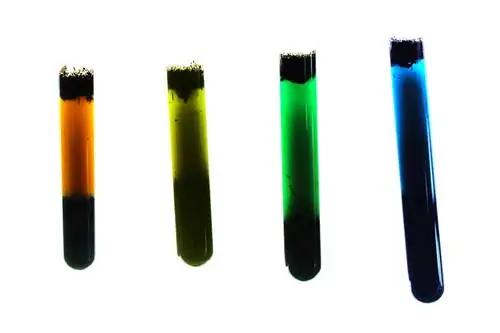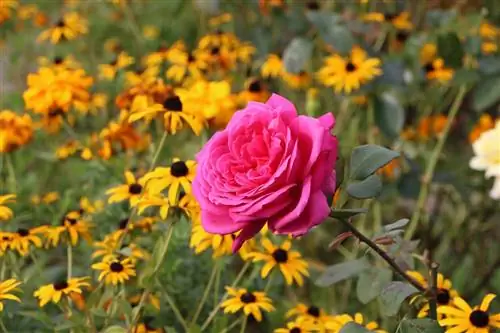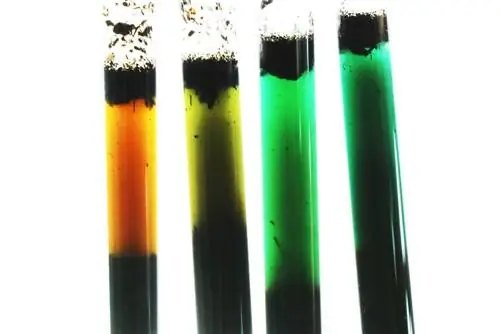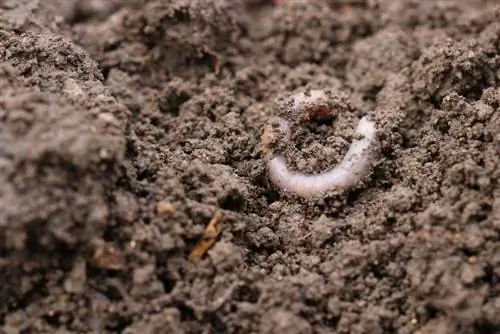- Author admin [email protected].
- Public 2023-12-17 03:39.
- Last modified 2025-01-24 12:45.
Because pH values can change for various reasons, it is important to act as soon as developmental disorders are detected. The following are the best tips for measuring and regulating.
Tips for pH measurement
Testkit
Test kits for measuring the pH value in the soil are available from specialist retailers. A soil sample must be taken and filled with distilled water. A test strip is then held in, where the pH value causes color changes, which, depending on the intensity, allow the approximate value to be read. Since the exact application depends on the respective product, the product description must be read before use. But in any case, for an accurate result, soil should be taken from different places, moistened and kneaded together vigorously.
Baking soda and vinegar test
A test using baking soda and vinegar cannot accurately measure pH values. However, they provide information about whether the soil quality is alkaline or acidic. In addition to baking soda and vinegar, you will need distilled water and two glasses/mugs. This is how it works:
- Pour a mixture of baking soda and distilled water into a container (one teaspoon of baking soda per 100 milliliters of water)
- Fill another container with soil sample and cover completely with vinegar
- Result: Baking powder container hisses - acidic earth
- Result: Vinegar container foams - alkaline soil
NOTE:
Acidic pH values are below 6.9 and alkaline above 7.1. Values around 7.0 are considered neutral.
Red cabbage test

A working home remedy for determining the pH values of the soil is to carry out the red cabbage test. As with the baking soda and vinegar test, only the pH range can be determined. This is how to do it correctly:
- Let distilled water boil briefly
- Cut fresh red cabbage and put it in the water bath
- Let it steep for a few hours
- Sift out the red cabbage and collect the liquid
- Completely cover about two tablespoons of a soil sample with the broth
- The brew will change color in a few minutes
- Result: Pink - acidic, purple - neutral, blue, green or blue-green - alkaline
Reducing pH values
If the pH value in the soil is too high and a more acidic environment is required, various methods are suitable for lowering the pH value: chemical products, organic agents and home remedies:
Peat
Peat is known for its pH-lowering properties. However, the use of peat is not considered environmentally friendly and climate-protecting because mining drains entire moor areas, which leads to the destruction of the ecosystem. For this reason, peat should not be used.
Oak Leaves
The leaves of the oak tree have a strongly acidic environment. As soon as it decomposes, acid begins to be released. Garden owners can use this to lower the pH value in two ways and apply it accordingly:
- Allow to rot as compost followed by fertilization
- Place oak leaves five centimeters high directly on the top layer of soil (mulch) - can also be enriched with pine needles
- Always start carefully as it has a strong effect on soil pH (to avoid acidification)
Tip:
If you don't have oak trees in your garden, you can use bags to collect oak leaves in parks and public gardens, especially in autumn.
Conifer Earth
Coniferous trees release noticeably acid into the soil of their location. To make the soil more acidic elsewhere in the garden, simply replace soil from conifers with soil that is too alkaline. In order to achieve optimal pH values, regular measurements should be carried out and a decision should then be made as to whether more conifer soil is necessary to reduce the pH.
Grapes
Acidic properties are also brought about by pressed grapes, or rather grape pomace, which is left over after wine production. The “active ingredients” include grape acid and fermentation substances, which are well tolerated by all important microorganisms in the soil. If you don't want to make grape pomace yourself, you can get it from winemakers in various regions of Germany.
Home remedies: coffee grounds
Coffee grounds are an environmentally friendly and cost-effective method for lowering the pH value. Coffee contains chlorogenic acid, which predominantly ends up in the coffee cup during brewing, but also remains in the coffee grounds. This ensures the pH value lowering effect in soils. Coffee grounds also have a preventive effect against some pest infestations.
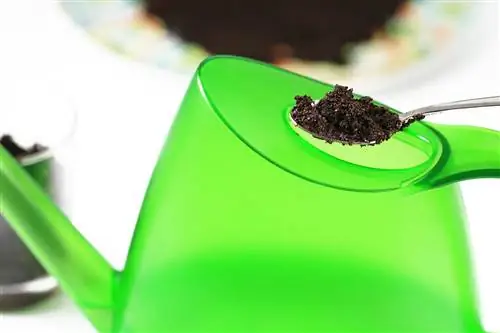
The application should be done as follows:
- Collect coffee grounds and let them dry thoroughly (never use them wet, as there is a risk of mold formation)
- To significantly reduce the pH value, mix with nitrogen fertilizer before use (increases the effect)
- Fix dried coffee grounds into soil
- Measure/check the soil value once a week and, if necessary, add coffee grounds until the desired value is reached
Iron sulfate
Iron sulfate forms acids relatively quickly in the soil to lower soil values. Iron sulfate is particularly suitable for heavily compacted clay soils due to its rapid acid formation. An immense reduction in the pH value can be achieved within just two weeks. But you should be careful when handling it: iron sulfate causes rust stains on textiles as well as on path and terrace slabs, which are difficult or impossible to remove. 500 grams of ferrous sulfate per square meter is recommended for one point subsidence.
Aluminum sulfate
Similar to iron sulfate, lowering the pH value also works with aluminum sulfate, which also forms acid in the soil but takes effect even more quickly. Aluminum sulfate is ideal for administration when plants have already suffered serious damage due to an acid value that is too low. Aluminum sulfate can be used to provide “first aid” and save the lives of many plants. For a quick effect on the soil and a drop of one point, a dose of 0.54 grams for three square meters of soil is recommended.
Sulfur
Sulfur has a slower effect on soil values. It is well suited for use in heavily compacted and heavy soils and has a longer duration of action. For this reason, it is mainly used for soil preparation when a low Potentia Hydrogenii value is required for the planned planting. It is optimal if sulfur is incorporated in autumn so that the soil has ideal acid values when planting in spring.
Rainwater
Rainwater is usually lime-free and thus promotes a reduction in soil acidity. Since an infinite amount cannot be watered, this method is only suitable for support. During the summer months, when drought results in higher watering/watering requirements, using a lot of rainwater can still slightly reduce the acid value without having to use another method at the same time. Measuring the pH value indicates whether watering with rainwater is sufficient or not.
Increase pH value
Just like pH values that are too high, pH values that are too low can also damage plants and impair their development. In order to increase the acid value in the soil, you should first and foremost avoid everything that was previously mentioned under “reducing the pH value”. The following methods and agents are also suitable for increasing the pH value:
Potassium hydroxide
In combination with oxygen, potassium hydroxide becomes a potassium hydroxide solution. This has a strong alkaline effect and can therefore be used optimally to balance out a pH value that is too low. But be careful, because the water generates heat and the compound can splash out of the vessel and cause corrosive effects on the skin.
Lime
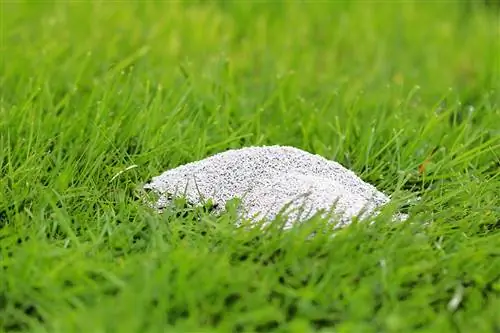
The best way to increase the acidity of the soil is with lime fertilization. On sandy soil, around 250 grams per square meter are needed to increase the Potentia Hydrogenii value by a full point. For heavy clay soils, around 350 grams or twice as much is recommended.
Finished chemical product
So-called pH-plus preparations are available from specialist retailers. Depending on the product, the dosage varies, which is why you should always read the instructions for use before use. Although this method is usually the quickest way to increase pH, it is not always the most environmentally friendly. Therefore, a chemical finished product should only be used if there is a need for quick action and effectiveness due to life-threatening damage to the plants.

